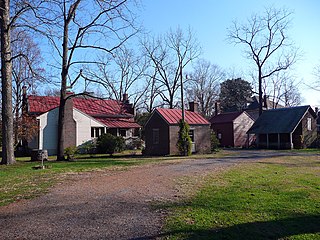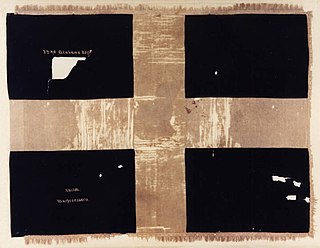Related Research Articles

The Battle of Chickamauga, fought on September 18–20, 1863, between the United States Army and Confederate forces in the American Civil War, marked the end of a U.S. Army offensive, the Chickamauga Campaign, in southeastern Tennessee and northwestern Georgia. It was the first major battle of the war fought in Georgia and the most significant US defeat in the Western Theater, and it involved the second-highest number of casualties after the Battle of Gettysburg.

The Battle of Stones River, also known as the Second Battle of Murfreesboro, was fought from December 31, 1862, to January 2, 1863, in Middle Tennessee, as the culmination of the Stones River Campaign in the Western Theater of the American Civil War. Of the major battles of the war, Stones River had the highest percentage of casualties on both sides. The battle ended in Union victory after the Confederate army's withdrawal on January 3, largely due to a series of tactical miscalculations by Confederate Gen. Braxton Bragg, but the victory was costly for the Union army. Nevertheless, it was an important victory for the Union because it provided a much-needed boost in morale after the Union's recent defeat at Fredericksburg and also reinforced President Abraham Lincoln's foundation for issuing the Emancipation Proclamation, which ultimately discouraged European powers from intervening on the Confederacy's behalf.

The Army of the Cumberland was one of the principal Union armies in the Western Theater during the American Civil War. It was originally known as the Army of the Ohio.

The Tullahoma campaign was a military operation conducted from June 24 to July 3, 1863, by the Union Army of the Cumberland under Maj. Gen. William Rosecrans, and is regarded as one of the most brilliant maneuvers of the American Civil War. Its effect was to drive the Confederates out of Middle Tennessee and to threaten the strategic city of Chattanooga.

The Chickamauga campaign of the American Civil War was a series of battles fought in northwestern Georgia from August 21 to September 20, 1863, between the Union Army of the Cumberland and Confederate Army of Tennessee. The campaign started successfully for Union commander William S. Rosecrans, with the Union army occupying the vital city of Chattanooga and forcing the Confederates to retreat into northern Georgia. But a Confederate attack at the Battle of Chickamauga forced Rosecrans to retreat back into Chattanooga and allowed the Confederates to lay siege to the Union forces.

The 17th Indiana Infantry Regiment, also known as 17th Indiana Mounted Infantry Regiment, was an infantry and mounted infantry regiment that served in the Union Army from 1863 to 1865 during the American Civil War. It served in West Virginia before being transferred to the Western Theater. In that theater, it was known for its membership in the "Lightning Brigade."
The 79th Regiment Illinois Volunteer Infantry was an infantry regiment that served in the Union Army during the American Civil War.

The 88th Illinois Infantry Regiment was an infantry regiment from Illinois that served in the Union Army during the American Civil War. The regiment mustered into service in September 1862 and was engaged at Perryville a month later. The unit subsequently fought at Stones River, in the Tullahoma campaign, at Chickamauga, at Missionary Ridge, in the Atlanta campaign, at Franklin, and at Nashville. The 88th Illinois especially distinguished itself at Stones River, Missionary Ridge, and Franklin. The regiment mustered out of service in June 1865.
The 13th Michigan Infantry Regiment was an infantry regiment that served in the Union Army during the American Civil War.

The 22nd Alabama Infantry Regiment was an infantry regiment that served in the Confederate Army during the American Civil War.
The 10th Kentucky Infantry Regiment was a three-year volunteer infantry regiment that served in the U.S., or Union Army during the American Civil War.
4th Indiana Battery Light Artillery was an artillery battery that served in the Union Army during the American Civil War. It was often referred to as "Bush's Battery".
The 59th Ohio Infantry Regiment was an infantry regiment in the Union Army during the American Civil War.
The 39th Regiment Indiana Infantry was an infantry regiment that served in the Union Army during the American Civil War. The regiment fought at Shiloh, Corinth, and Stones River. In April 1863 the unit acquired horses and Spencer rifles and became mounted infantry, serving in the Tullahoma campaign and at Chickamauga. On October 15, 1863, the unit was renamed the 8th Indiana Cavalry Regiment.

The 72nd Indiana Infantry Regiment, also known as 72nd Indiana Mounted Infantry Regiment, was an infantry and mounted infantry regiment that served in the Union Army during the American Civil War. The regiment served as mounted infantry from March 17, 1863, to November 1, 1864, notably as part of the Lightning Brigade. during the Tullahoma and Chickamauga Campaigns.

The 124th Ohio Infantry Regiment, sometimes 124th Regiment, Ohio Volunteer Infantry was an infantry regiment in the Union Army during the American Civil War.

James St. Clair Morton was an American military officer who served as chief engineer of the Army of the Ohio, the Army of the Cumberland and the XI Corps in the Union Army during the American Civil War. He led construction of key embattlements protecting Nashville, Tennessee including Fort Negley and Fortress Rosencrans. He served as major in the regular army and was promoted to brigadier general of the Pioneer Brigade in the volunteer army. Morton requested a reduction in rank from brigadier general of volunteers after being reprimanded by General William Rosecrans in front of colleagues due to drunkenness in the ranks and errors in troop placement. He was killed in action during the Second Battle of Petersburg and brevetted brigadier general posthumously.

William J. Carson was a United States Army soldier and recipient of the United States' highest military decoration, the Medal of Honor, for his actions at the Battle of Chickamauga in the American Civil War.

The Lightning Brigade, also known as Wilder's Brigade or the Hatchet Brigade was a mounted infantry brigade from the American Civil War in the Union Army of the Cumberland from March 8, 1863, through November 1863. A novel unit for the U.S. Army, its regiments were nominally the 1st Brigade of Maj. Gen. Joseph J. Reynolds' 4th Division of Thomas' XIV Corps. Operationally, they were detached from the division and served as a mobile mounted infantry to support any of the army's corps. Colonel John T. Wilder was its commander. As initially organized, the brigade had the following regiments:
Henry Benedict Mattingly was a Union Army soldier in the American Civil War and a recipient of the United States military's highest decoration, the Medal of Honor, for his actions at the September 1, 1864, Battle of Jonesborough, Georgia.
References
- ↑ War Department, United States. Official Records of the War of the Rebellion Volume XX(2). Government Printing Office.
- ↑ Woodworth, Steven (1998). The Art of Command in the Civil War. Nebraska University Press. p. 93.
- ↑ Huhta, James K. "Fortress Rosencrans". www.tennesseeencyclopedia.net. Tennessee Historical Society. Retrieved 29 September 2023.